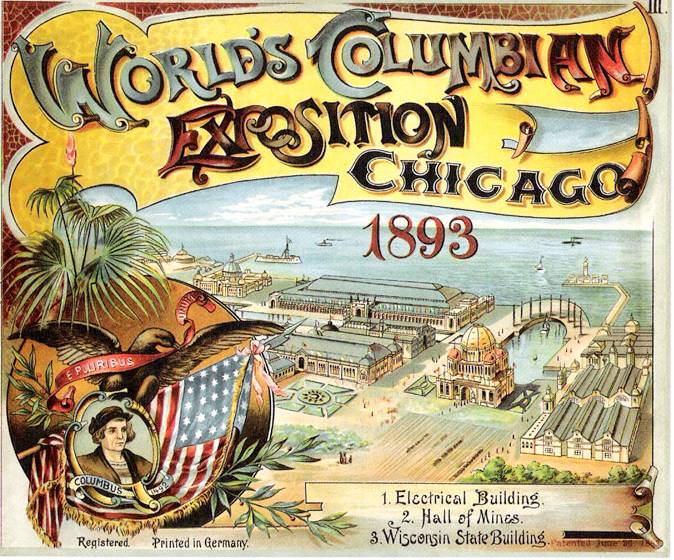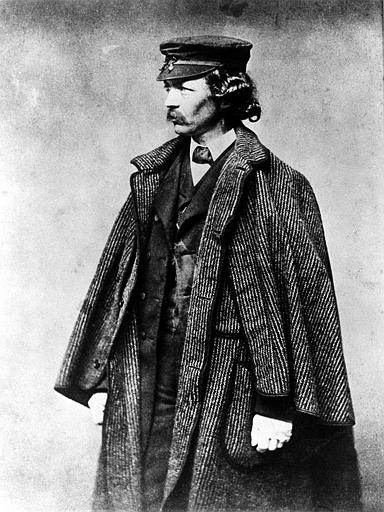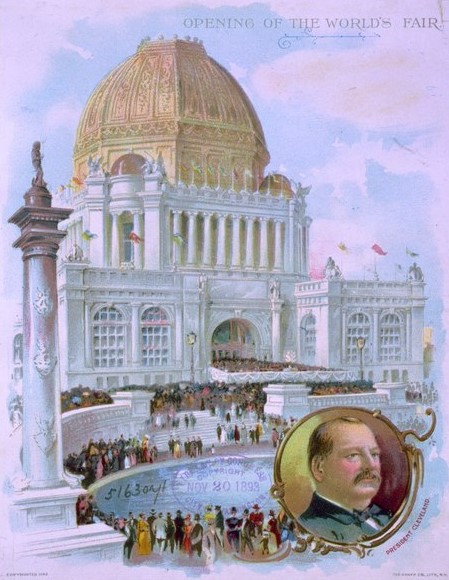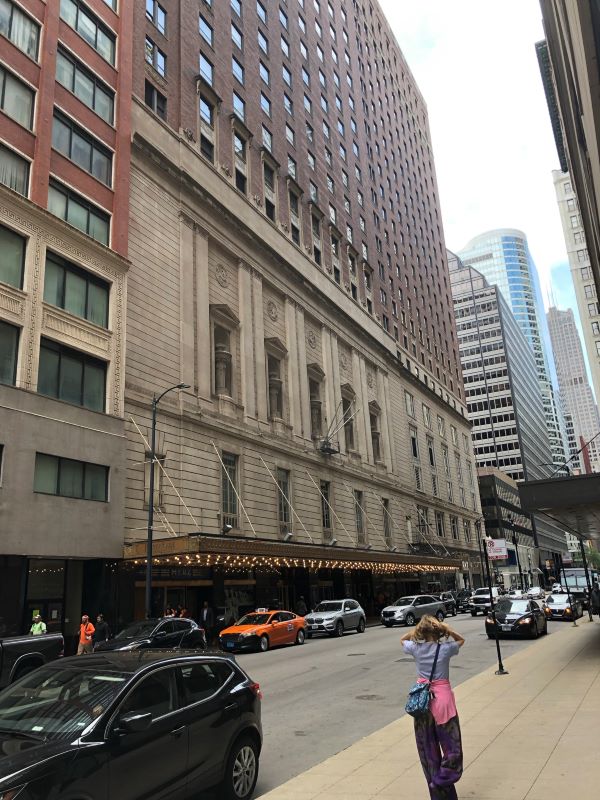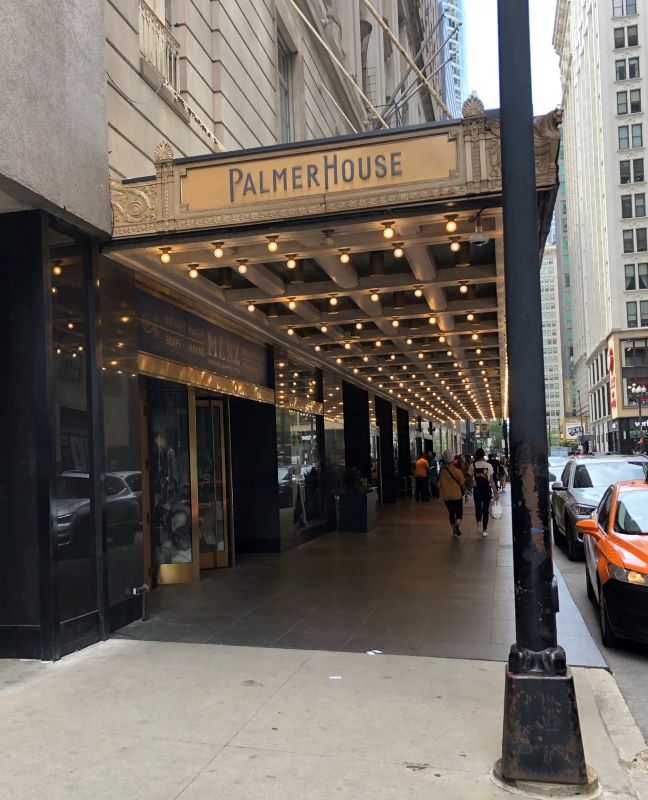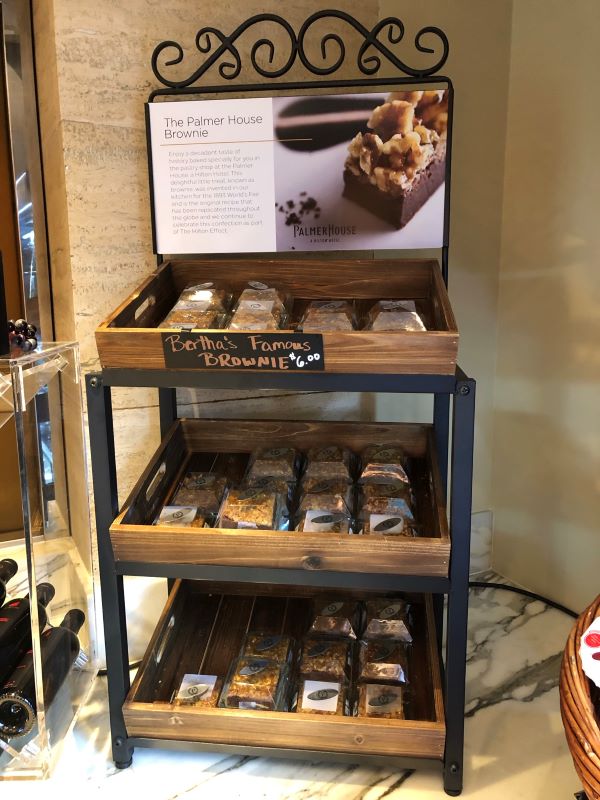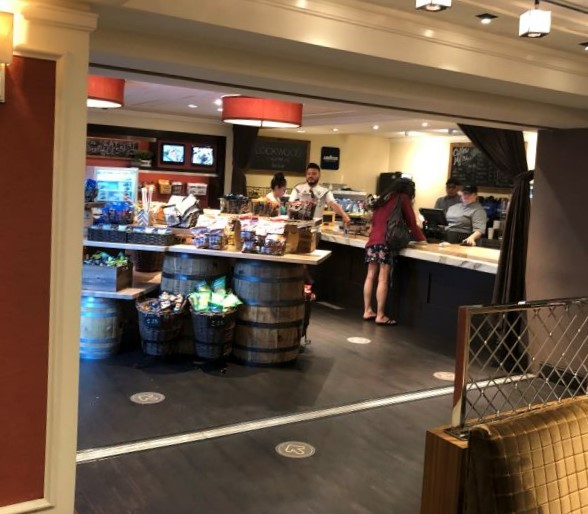This tour takes you around the city to experience the Chicago World’s Fair foods introduced in 1893. Isn’t one of the best features of any fair or festival the food? 1893 was no exception and many of the foods introduced are things we’re still enjoying over 100 years later. Spoiler alert: it’s not deep dish pizza!
You can buy these products in stores around the country, but isn’t it more fun to get them in the city where it all started?!
Chicago is the third largest city in the US and it has a long and storied connection to food. The name even relates to food, though not very favorably. Tour guides love to share that the name comes from a Native American word that translates to something like “stinks of wild onions”.
But don’t let that put you off from visiting! It’s a wonderful city and one of my favorite places.
In 1893, Chicago hosted the World’s Fair. The theme was the “Columbian Exposition” in honor of Christopher Columbus arriving in the Americas 400 years earlier. Technically, he landed in the Caribbean and not what is now the US but that’s a story for another time. For now – let’s eat!
Getting There
Location: Downtown area of Chicago, IL, US
Transport: There are 2 airports to choose from in Chicago: O’Hare (ORD) and the smaller Midway (MDW). Both have easy subway access to downtown; a car is not necessary to visit!
Highlights
Chicago World’s Fair Food introduced in 1893:

Already have a good sense of what the World’s Fairs were all about? Then bypass the history lesson and Skip to the Trip to get to the Chicago Worlds Fair food tour!
What is a World's Fair?

By the late 18th century the Industrial Revolution was in full swing and European nations like Bohemia (present day Czech Republic), France and England were holding national exhibitions to highlight these modern marvels.
In England, Queen Victoria’s husband, Prince Albert, was a tremendous supporter of industry and the arts. He planned and held what is widely considered the first international fair in 1851. Also called “The Crystal Palace” Exhibition for the purpose-built facility created to house the Fair, the event was a tremendous success. Other nations quickly jumped on board.
Chicago's Rising Star
Chicago was founded in 1833 and was a bustling city when the Great Fire struck in 1870. The city bounced back with aplomb and within 15 years they were vying to be a host city for the World’s Fair. Chicago wanted to show they were on par with New York, Paris and London.
A fierce competition between Chicago and New York ensued, with a New York reporter stating that Chicago’s plan was nothing but “hot air” with their boastful claims. Thus, the “Windy City” nickname was born.
Paris 1889: Universal Exposition
The exposition in Paris in 1889 presented the Eiffel Tower to the world and it was a smashing success, further fueling US cities to compete for the next fair.
A contingent from Chicago attended the Paris fair and quickly formed the “World’s Exposition of 1892” corporation to raise 5 million dollars through bond sales. They were fully funded in less than a year!
A congressman from Illinois put forth a bill in the House of Representatives to fund a fair in Chicago and by April of 1890 President Harrison was signing it into law. Chicago was getting the fair.
But how do you top the Eiffel Tower? Chicago’s answer was the first ever Ferris Wheel. The original is gone but you can ride a modern rendition at Navy Pier.
Chicago 1893: The Columbian Exposition
Jackson Park (and what is now part of Grant Park) was selected as the site for the Chicago fair. An entire infrastructure would need to be built to last the 6 month duration of the fair. Buildings, transportation, walkways, etc all needed to be designed and built.
Frederick Law Olmstead was selected as the landscape architect for the fair. Daniel Burnham and John Root were the architects chosen to focus on the construction and design of the buildings, respectively. I LOVE Burnham and Root buildings. A future post will cover their work for sure.
Olmstead, Burnham & Root certainly had their work cut out for them. Jackson Park was not well developed at the time and described as marshy and covered in reeds and scrub vegetation. Hardly the cosmopolitan setting of Paris and the Eiffel Tower!
The public were allowed on the grounds during construction, and admission cost 25 cents initially. It proved to be so popular, the admission was raised to 50 cents but still workers complained about having up to 5,000 onlookers at a time!
Buildings needed to last 6 months but weren’t intended to be permanent, so construction materials were cheap and not very durable. Plaster, jute and cement were mixed to make a kind of stucco that covered timber frames. The Museum of Science & Industry is the only building today which remains.
Buildings were painted in white and electric lighting installed, giving rise to the nickname “The White City”.
The Midway of the Fair was nearly a mile long “plaisance” and the site covered more than 630 acres, by far the largest to date. Nearly 200 buildings were spread out over the site.
It was estimated that, to walk the entire fair, it would take a person 3 weeks to complete and you would cover 150 miles!
Adult admission to the fair cost 50 cents; less for children. Those wishing to bring their own camera needed to buy a $2 photography license and no tripods were allowed! The idea was to get tourists to buy “official” photos from the fair instead.
On May 1, 1893, Grover Cleveland made a speech and pressed a button which turned on lights and electric motors across the site. The fair had begun.
World Fairs Today
I assumed that somewhere through the years World’s Fairs kind of died off with the advent of tv and the internet. But I was in Milan, Italy one year in when I saw signs promoting the 2015 Expo there so I did some homework.
It turns out, in 1928 the Bureau International des Expositions (“BIE”) was formed as a coordinating body for worlds fairs and they still operate today! 169 countries are members of the BIE and more than 50 global expositions have been held since its founding!
I would love to attend a modern World’s Fair – that’s going on the bucket list!
The next World’s Fair was scheduled for Dubai in 2020 but was postponed due to the pandemic. It is currently scheduled to run from October 2021 – March 2022 (still under the name Dubai 2020). The theme is “Connecting Minds, Creating the Future” and will focus on Opportunity, Mobility and Sustainability.
1893 Chicago World's Fair Food Tour
Note: restaurants often change their menu and item availability. Not everything listed here may be available at the time of your visit.
Many concessions at the Fair were located along the “Midway Plaisance”, which still exists today in Washington Park. The 1922 statue “The Fountain of Time” is a perfect reference point to start your literal stroll down memory lane. Starting here, you can walk along the entire Plaisance (pronounced like “pleasants”).
The word itself means a shady walk lined with trees and shrubs. The term “Midway” became synonymous with fairs and carnivals that we still use today. It’s generally where you find all the food stands and games of chance.
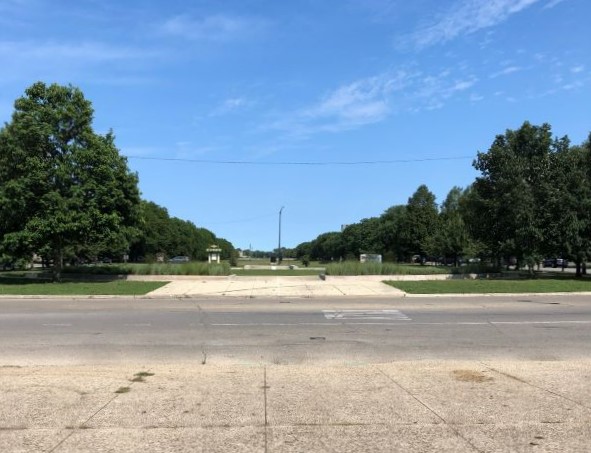
This food tour is centralized to the Loop area as much as possible since there’s a high concentration of restaurants there and it’s easy to get to. To get from the Loop to the site of the Fair, take the Green Line south to the Garfield stop, which is on the western edge of Washington Park or the Cottage Grove stop and walk north. You can also take bus #4 to Cottage Grove which stops right at the Plaisance at 59th street, but that takes a little longer than the train.
To be honest, there’s not really much to see so I wouldn’t make the trek unless you really want to be where it all happened. You’re better off visiting the Museum of Science and Industry; the only building left from the Fair.

PABST BLUE RIBBON BEER
If you look at a can of Pabst, you’ll see the statement: “Selected as America’s Best in 1893”. There were more than 20 beer companies exhibiting at the fair, including Anheuser-Busch and Schlitz.
There was no blue ribbon awarded at the fair, but Pabst was selected as the best beer at the fair by a panel of international judges. It was several years before the company thought to promote their victory. The blue ribbon logo and America’s Best phrase was added by the Pabst marketing team in the 1950’s.
There are several places you can get a “PBR” in Chicago; the site “Untappd” is a great way to find where it is served. My choice for this tour is at Roots Handmade Pizza, 744 S Dearborn St.
Roots also happens to serve “Quad City” style pizza, which is the area of Western IL where I grew up, so it’s also a little taste of home for me! If you’re really up for a trip, you can tour the historic Pabst brewery 90 miles north of Chicago in Milwaukee, WI.
An honorable mention for Pabst is the South Loop Club at 701 S State Street. Look for the neon ribbon in the window! It’s only a couple blocks from Roots.
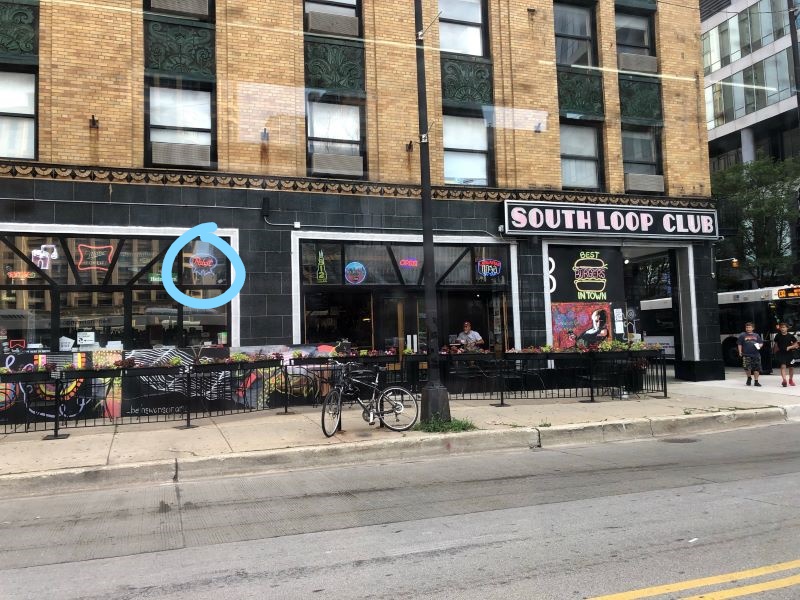
VIENNA BEEF HOT DOGS
A classic ballgame staple also got its start at the 1893 World’s Fair in Chicago. Two men from Hungary came to the fair to sell their beef sausages topped with mustard and onion in their “Old Vienna” stand on the Plaisance.
Their sausages were so popular, the men stayed in Chicago and opened the Vienna Sausage Factory. Today, you can find their “Vienna Beef” hot dogs all over the city. Their yellow and blue logo is often prominently displayed where they are served.
They’re great no matter where you get them – just don’t expect to get ketchup. A “Chicago style” dog is in a poppy seed bun topped with yellow mustard, onions, sweet relish, dill pickle spear, tomato slices, sport peppers and a sprinkle of celery salt.
One good option during the summer is Relish Chicago near Millennium Park at 315 S. Michigan Ave. Year round, Luke’s is another good option, 215 W. Jackson Blvd.
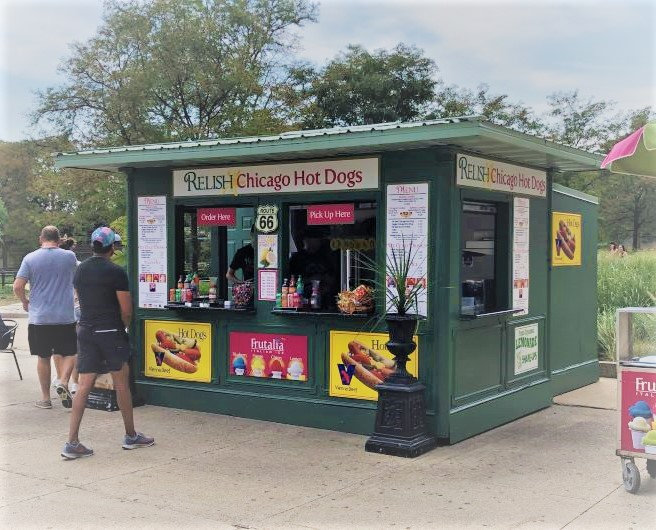

The Palmers were a power couple in 19th century Chicago. By 1893 Potter and Bertha Palmer were part of the ultra-elite with millions in lucrative real estate investments. Potter’s wedding gift to Bertha was to build the Palmer House Hotel, which unfortunately succumbed to the Great Fire of 1871 before it could open but was rebuilt as the place you’ll visit on this tour.
Bertha Palmer was heavily involved in the 1893 Fair. She was the President of the Board of Lady Managers. The group established a pavilion to celebrate accomplishments of women around the world. She also acted as hostess for royalty and presidents who visited the Fair.
The story goes that Bertha asked the chef at the Palmer House Hotel to create a dessert that could be packed into boxed lunches and easily eaten by the ladies in her group. The brownie was born – but not named right away. The name “brownie” was christened a few years later but I couldn’t find what it was called at first!
The Palmer House Hotel still serves their soft, fudgy brownies today using the same recipe that was created in 1893. The hotel is beautiful and well worth the stop at 17 E Monroe St. You can grab a brownie and a cup of coffee and relax in the fancy lobby!
The recipe is also available on their website.
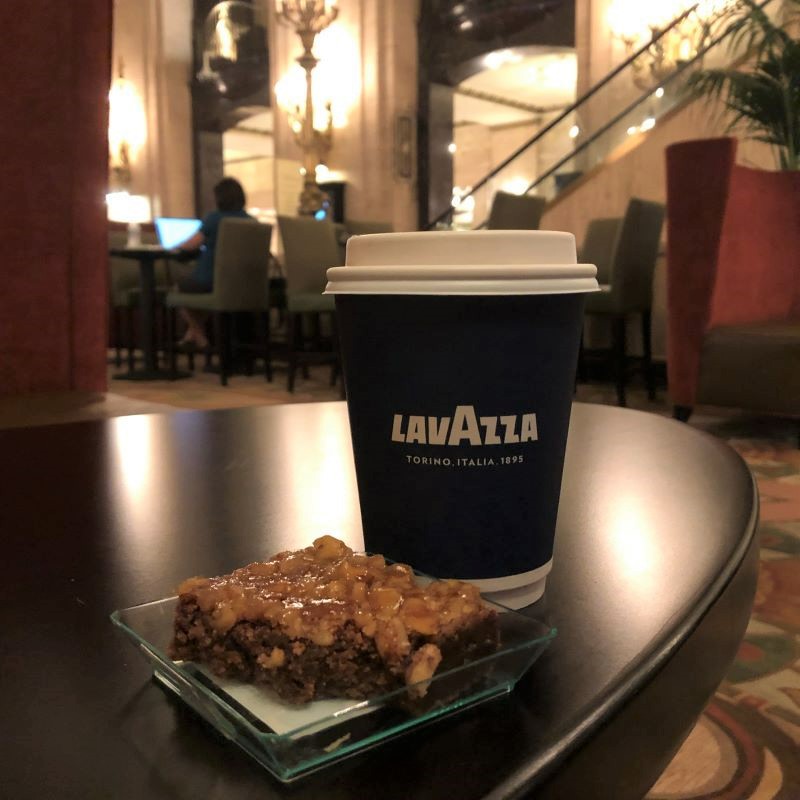
CREAM OF WHEAT & SHREDDED WHEAT CEREALS
The Fair was the national debut of several breakfast items and I’m a fan of both of these. Cream of Wheat is such a great breakfast, especially on cold winter days. Add some milk and brown sugar and you’re set! And Shredded Wheat is great anytime of year – especially Frosted Mini-Wheats.
I haven’t been able to find shredded wheat on a menu in Chicago yet, but I’ll keep looking! I was able to find a place that serves Cream of Wheat! The Bagel Restaurant at 3107 N Broadway is in the Lakeview area.
To get to The Bagel from the Loop, take the Brown line to Wellington or the Red line to Belmont. From the station it’s about a 10 minute walk east to The Bagel. Or catch Bus #36 Broadway north to Broadway & Barry and you’re right on their doorstep!

JUICY FRUIT GUM
The Wrigley Company initially included gum as a bonus item in the soap and baking soda they were selling. Customers were so enthusiastic about the gum, the company decided to pivot and focus on it alone.
The “Juicy Fruit” flavor was introduced at the 1893 Fair and it was a success! You can find it all over the city at Walgreens, Target, etc – OR you can grab a pack at the Lockwood Cafe at the Palmer Hotel when you’re getting your brownie!
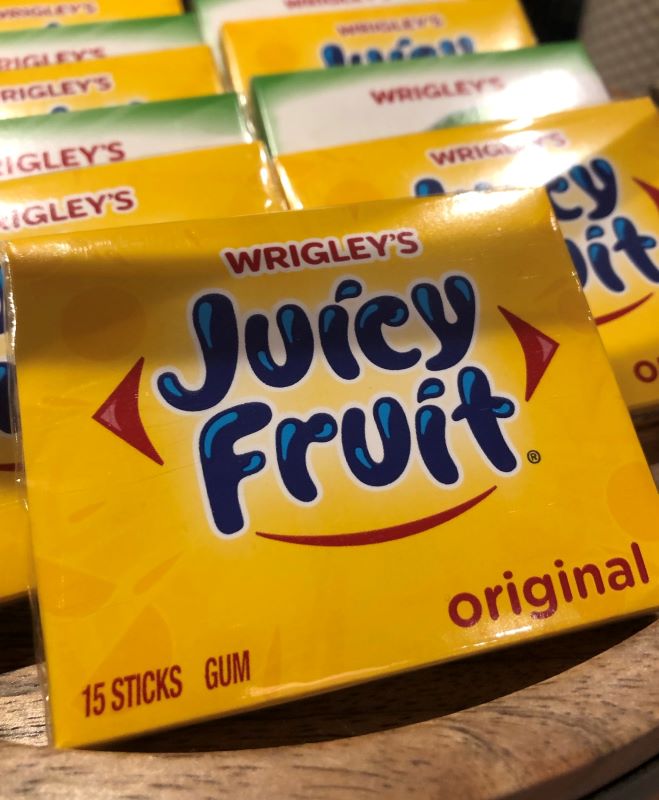
Chicago Worlds Fair Food - Honorable Mention
CRACKER JACK
This one has a disputed claim because they aren’t in the directory. Just like you see at fairs today, food was sold from mobile carts or stands that would come and go around the site and would not have been listed as an official vendor.
PepsiCo, who owns Cracker Jack today, says German brothers introduced their molasses-coated mixture of popcorn and peanuts to the world at the 1893 fair. The snack was such a hit, the brothers decided to mass market the product and the name “Cracker Jack” was registered in 1896. The term was a popular slang for something really outstanding – “That’s crackerjack!”
In 1908 the song “Take Me Out to the Ballgame” called for “peanuts and Cracker Jack” and the treat became synonymous with baseball. You can get Cracker Jack at a Cub’s game at Wrigley Field in Chicago, and I assume you can get it at Guaranteed Rate Field where the White Sox play as well.
If I’m being honest, I’m not a big Cracker Jack fan, though I do love caramel corn. If you want a modern Chicago caramel corn staple, go to one of the Garretts locations around the city, like 33 West Jackson Blvd. There may be a line outside, but it’s worth the wait! Forego the fancy blends and get the Garrett Mix of cheese & caramel.
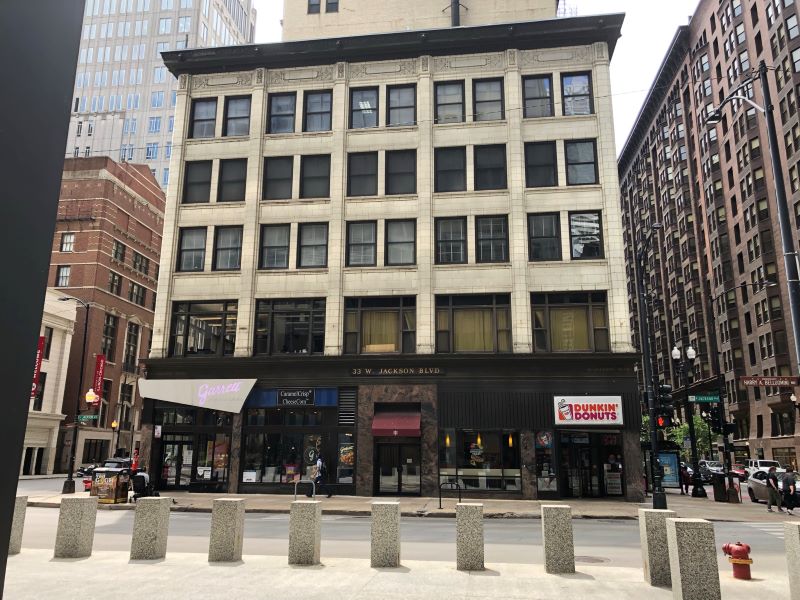
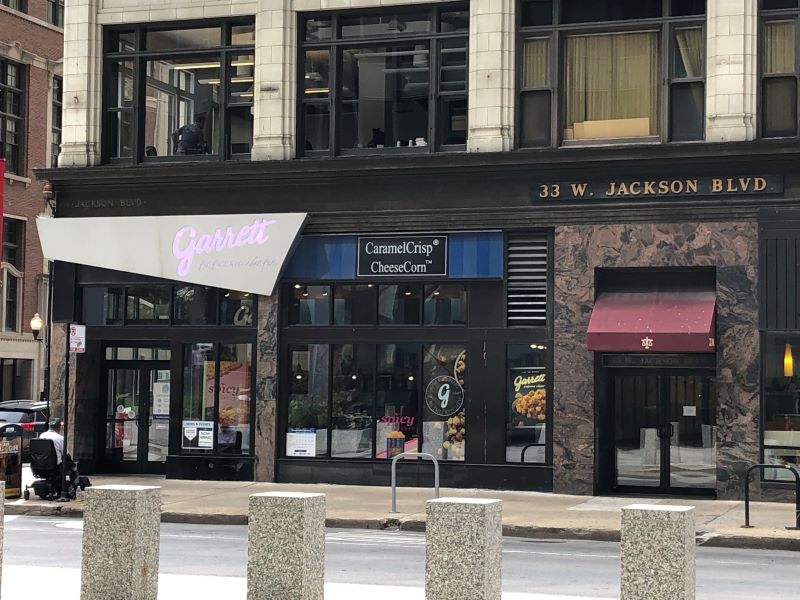
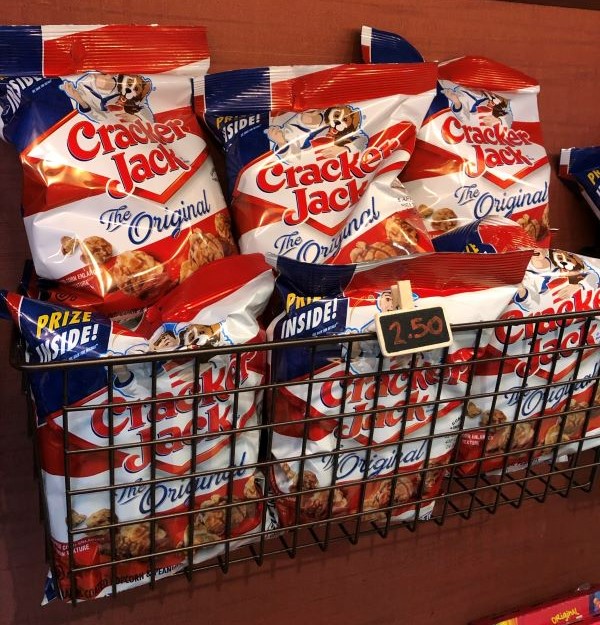
Views from the Fair
The 1893 Chicago World’s Fair was a smashing success. It was so significant for the city, it is acknowledged as one of the stars on the Chicago flag that represent momentous events in Chicago history. The other 3 stars represent the founding of Fort Dearborn in 1803 in what would become Chicago, the Fire of 1871, and the other Chicago Worlds Fair in 1933.
I was really hoping Chicago would get the 2016 Olympics and get a 5th star on the city flag but it wasn’t meant to be. Hopefully some day!

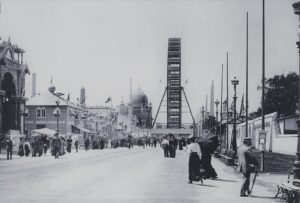
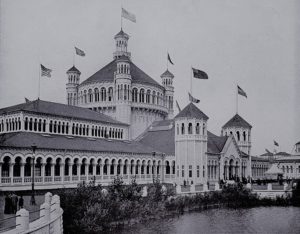
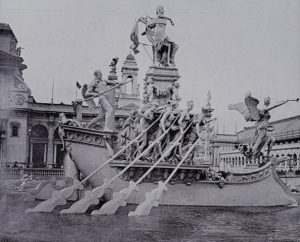

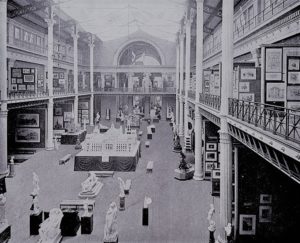
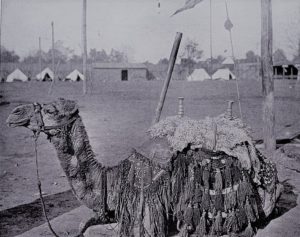
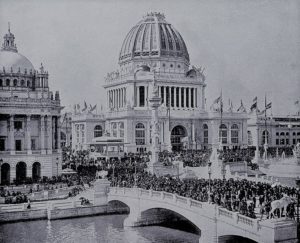
Post Sources:
[bg_collapse view=”link” color=”#4a4949″ icon=”arrow” expand_text=”Show More” collapse_text=”Show Less” ]
BIE – Bureau International des Expositions website. Accessed 6 July 2021.
“The Chicago World’s Fair of 1893” by Stanley Applebaum. Dover Publications. 1980.
1997, July 16. Glazing Through Chicago’s Food History. Chicago Tribune. Accessed 6 July 2021.
“Food and Drink Legacies of the 1893 World’s Fair” by Katherine Nagasawa, 18 May 2019. WBEZ Chicago. Accessed 10 July 2021.
Official Directory of the World’s Columbian Exposition. W.B. Conkey Company Publisher. 1893.
Made in Chicago Museum Website. Accessed 10 July 2021.
“The Palmers“. PBS American Experience
[/bg_collapse]

